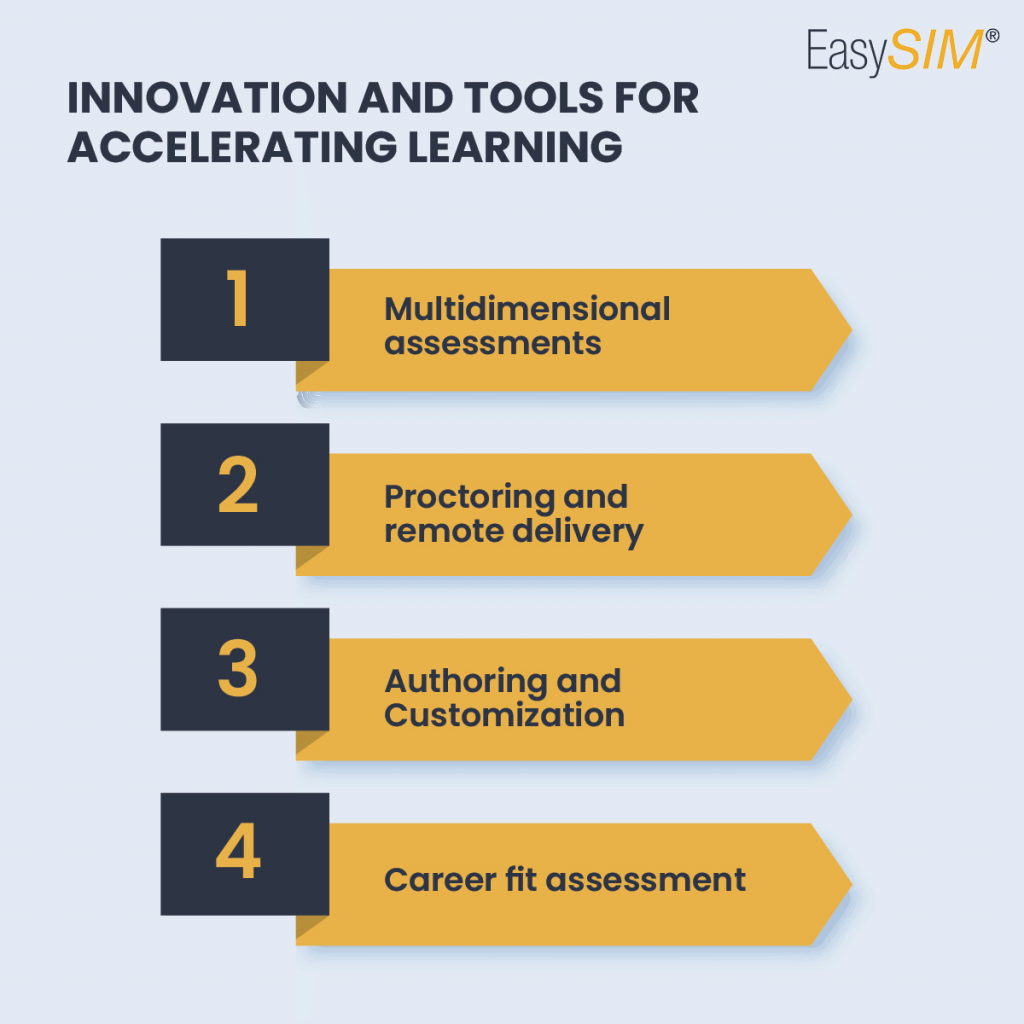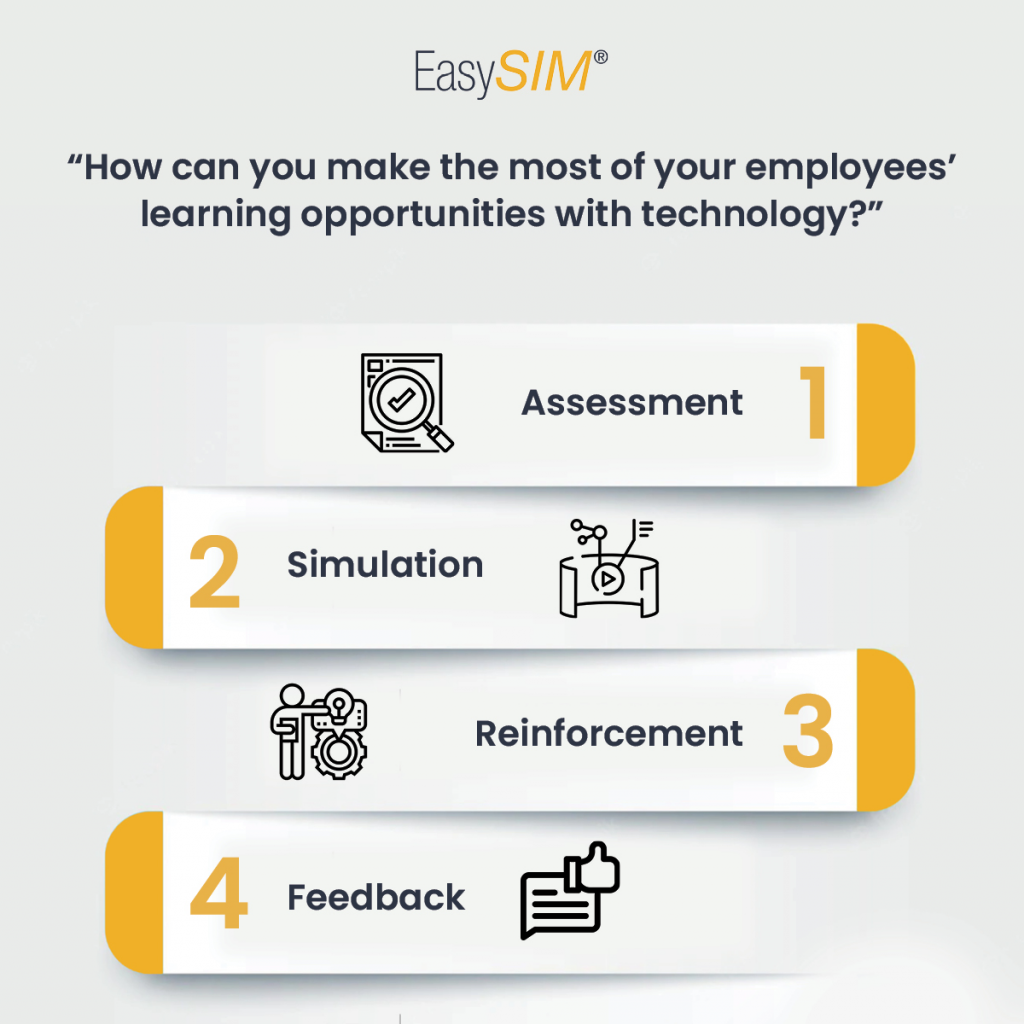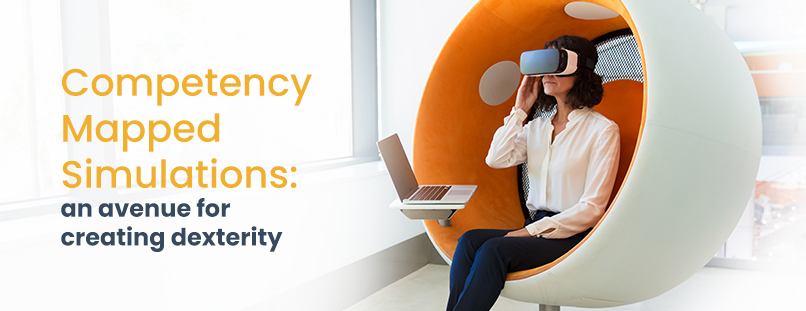Introduction:
Learning technologies open up a brand-new realm of emotional involvement and digital learning. The bulk of businesses—private, public, nonprofit, for-profit, SMEs, and mega conglomerates alike—rely on their employees for expansion, innovation, and success. It’s no secret that one of the key trends supporting great leaders, concepts, and businesses is upskilling. In order to be satisfied at work, employees need to be involved, learning, and developing their own skills. To solve the problem of skills & competency development in this new era of learning and development, many corporations strive “to fuel personalized learning and skills development. Technology is opening up a whole new world of potential in the learning and development era considering the needs of modern employees. This includes examples such as educational video-based learning, gamified training, the use of learning management systems, virtual reality training, etc.

Innovation and tools for accelerating learning
The technology used for assessment is becoming increasingly advanced and can replace people when assessing capabilities. Technology must change to deliver assessment at scale given the large reskilling that will be required as a result of artificial intelligence (AI) and robotic process automation (RPA):
Multidimensional assessments may measure a person’s multiple characteristics at once. For instance, tests now allow for the simultaneous measurement of logic and digital skills.
Proctoring and remote delivery of evaluation technologies allow for remote identity verification.
Technologies now support authoring and customization of the creation and delivery of bespoke assessment solutions.
Career fit assessment is a developing category to assist people in finding the roles and vocations they will love.
Increasing technology’s impact on training and development
Technology has played a significant part in training and development. Since the first learning management system, PLATO, was created in 1960 and became widely used around the turn of the century, it has assumed a more significant position in corporate learning and development.
Additionally, companies can use technology to customize competency-based evaluations and create personalized learning paths. This adaptive learning has been demonstrated to boost engagement, improve retention, and promote a favorable return on investment. Training managers can use competency-based training and assessments to create individualized career paths using algorithms that automatically suggest reviews and new content as learners proceed through the training, starting at onboarding and continuing throughout an employee’s time with the company.
Let’s break down the four most crucial learning process components, the ones that can make or break your employee training, in this brief examination of the use of technology in training and development.
Let’s take a closer look at how technology can make the most of your employees’ learning opportunities.

Learning Stage #1: Assessment
Knowing what a person already knows is necessary before you can certify that learning has occurred. Because of this, the first step in examining how technology might be used in training and development is to assess someone’s knowledge and skills.
Assessments made by professors in a classroom may be casual and unrecorded. However, one needs to use technology to achieve this on a large scale within an enterprise organization and then apply the results to the growth of individual employees.
By tracking employee knowledge before and after the process, technology enables one to determine how practical training and development are. It also allows you to assess the quality of the movement. For instance, one might observe demographic trends to ensure you haven’t introduced any inherent biases, or one might conclude that a training program needs to be revised because everyone who participates in it does poorly on the evaluation.
Assessment may also get more complicated as learning and development technology advances. For instance, one can go beyond the check-the-box knowledge in this baseline to accurately reflect a person’s priorities and growth prospects. One can feel their leadership aspirations, the propensity to behave like an owner, and even their viewpoints on specific business issues.
Learning Stage #2: Simulation
Real-world experience is the best way to learn something because it requires application before it can truly become your own. But bringing that kind of experience to everyone at scale becomes problematic at a certain point in an organization’s growth trajectory. Technology, however, makes it much simpler to imitate real-world learning.
For instance, simulations offer good practice for values-based decision-making and support when we undertake training for customer service abilities. Employees can simulate thinking through their thoughts and practice making those trade-offs in a safe setting rather than trying new concepts on actual clients.
Learning Stage #3: Reinforcement
It’s one thing to educate 10,000 employees with high-quality training materials, but quite another to provide them the opportunity to practice what they’ve learned. It’s essential to have a scalable and economical method of reducing distraction and enhancing your staff’s training.
You can use technology to build specialized support for a particular employee, course, or subject during the reinforcement phase. After an individual has completed training, it is simpler to integrate their new knowledge into their daily work.
Learning Stage #4: Feedback
Live, one-on-one feedback helps knowledge be put into practice. Still, you can picture the organizational problem that would arise from giving each employee that kind of in-depth evaluation in person. It would be tricky, even with a fully staffed learning and development team.
However, cutting-edge tools like virtual avatar programs and video conferencing allow for reviewing and reporting employee performance on a scale that would otherwise be unthinkable.
Elevating technology in corporate learning and embracing It
Technology may help us develop and learn in the ways that are always necessary and will continue to be as we face and conquer new obstacles in the corporate environment. With these initiatives, many competency-based platforms are created that alter people, missions, and businesses and encourage them to do more than they had anticipated. Today, technology is essential to success and can improve our work, but only if we let it.






























